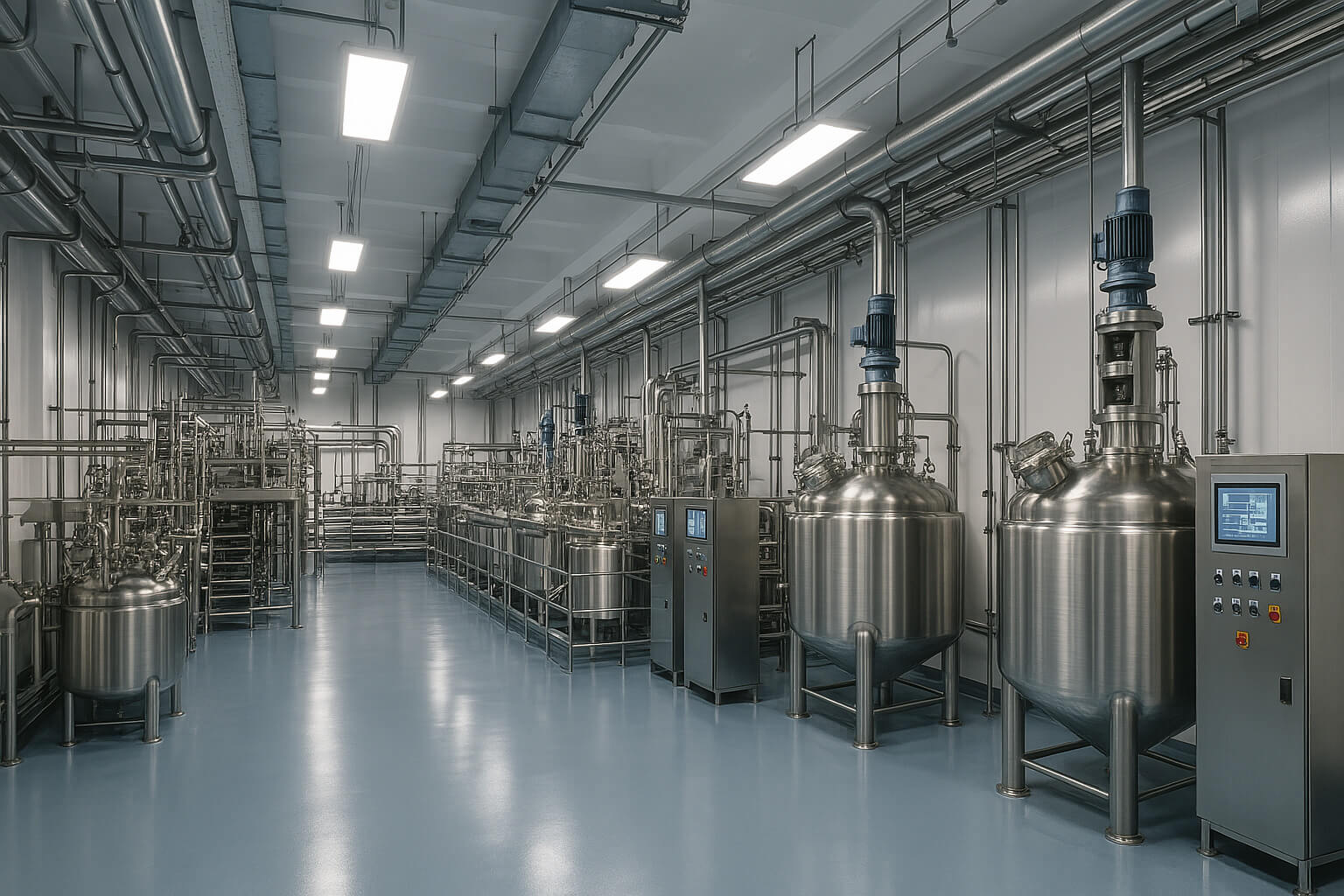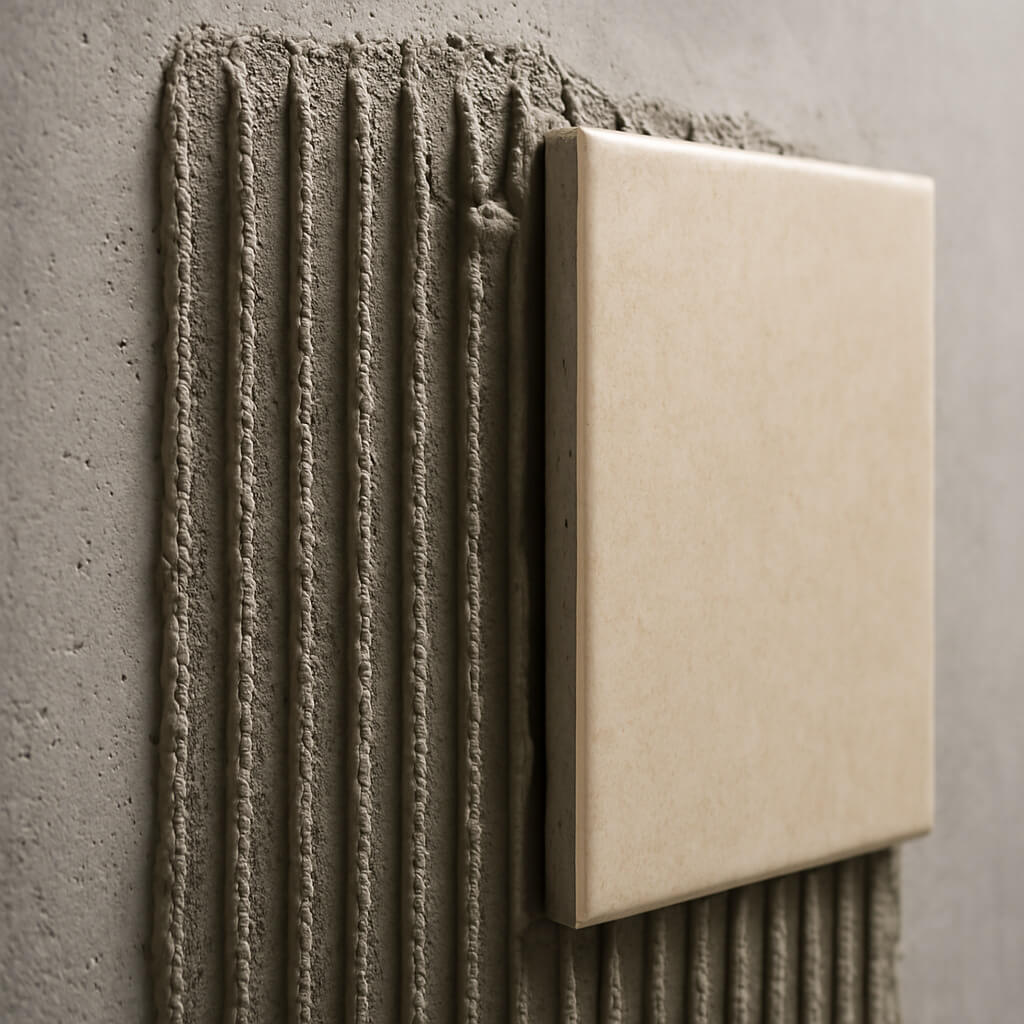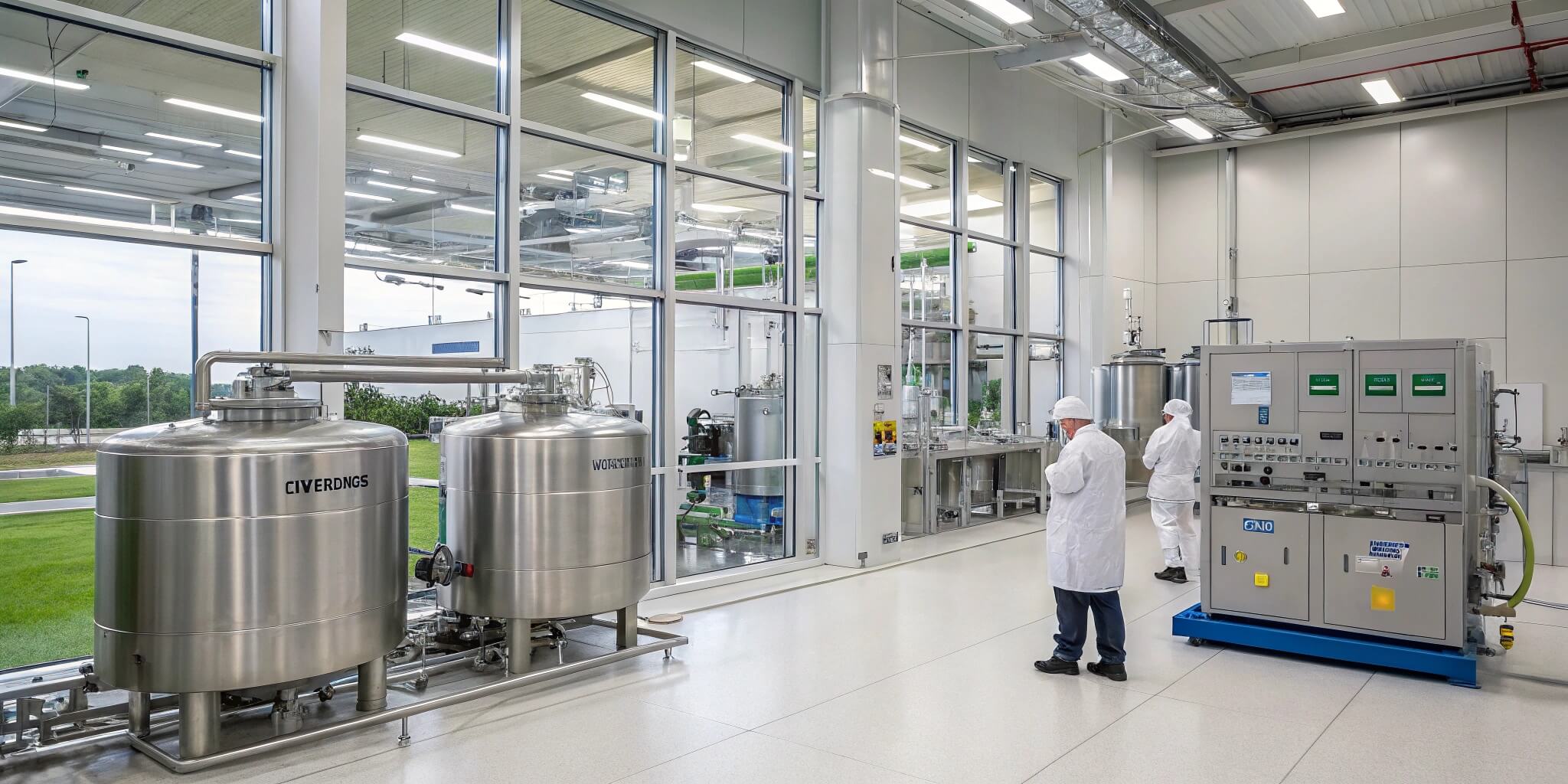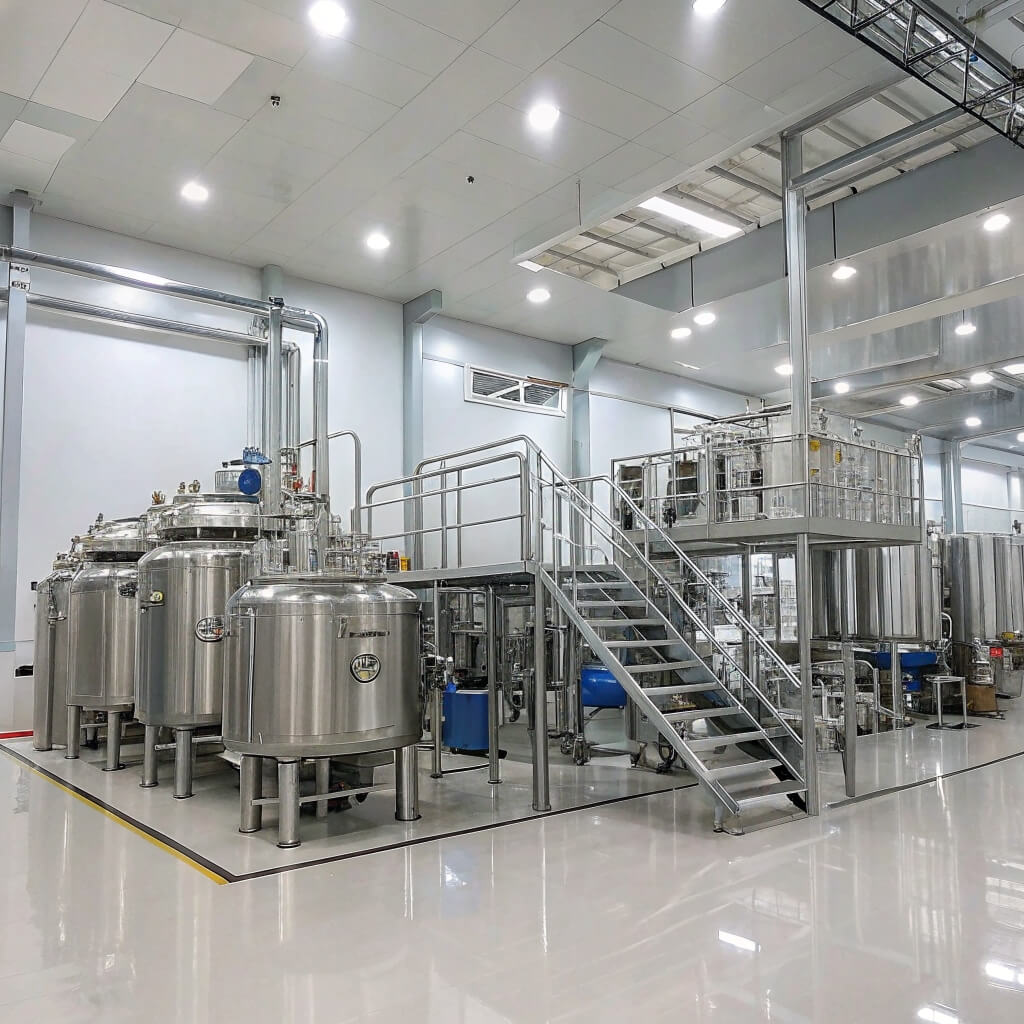Finding reliable HPMC suppliers in China can be overwhelming. With hundreds of factories claiming superior quality, how do you separate marketing hype from actual production capability?
Hydroxypropyl Methylcellulose (HPMC) suppliers in China range from large-scale manufacturers with international certifications to smaller operations with limited quality control. The top suppliers combine production capacity, quality consistency, and export experience.

A state-of-the-art HPMC production facility in China with advanced manufacturing equipment and quality control systems.
China dominates global HPMC production with over 70% market share. Let’s examine what makes certain suppliers stand out and how to identify the most reliable partners for your business needs.
What is the current state of the HPMC market in China?
The HPMC market in China faces unprecedented demand yet struggles with raw material volatility. How can buyers navigate this complex landscape?
The Chinese HPMC market currently represents approximately 70% of global production capacity, with annual output exceeding 400,000 tons. Major production hubs are concentrated in Shandong, Hebei, and Jiangsu provinces, where access to raw materials and logistics infrastructure creates competitive advantages.
Recent years have witnessed significant market consolidation as environmental regulations have forced smaller, non-compliant factories to close. This shift has benefited larger manufacturers with proper environmental protection systems and standardized production processes. At Morton, we’ve observed this transition firsthand, as our customer base has expanded following the closure of several smaller competitors who couldn’t meet the stricter emissions standards.
The market segmentation has evolved toward specialization, with top-tier suppliers focusing on specific industries. Some manufacturers concentrate exclusively on pharmaceutical-grade HPMC that meets USP and EP standards, while others specialize in construction-grade products optimized for tile adhesives or renders.
Export markets continue to drive growth for Chinese HPMC producers. While domestic construction remains the largest consumption sector, international markets show the highest growth rates. Chinese manufacturers have responded by improving their international certification portfolios, with leading suppliers now routinely obtaining FDA, REACH, and ISO certifications.
| Tier | Number of Manufacturers | Annual Production Capacity | Quality Characteristics | Target Markets |
|---|---|---|---|---|
| Tier 1 | 5-7 manufacturers | >30,000 tons each | International certifications | Global pharmaceutical, food, construction |
| Tier 2 | 15-20 manufacturers | 10,000-30,000 tons | Good quality control | Regional export markets, domestic high-end |
| Tier 3 | 50+ manufacturers | <10,000 tons | Variable quality | Primarily domestic construction |
How to evaluate HPMC manufacturers in China?
Selecting the wrong HPMC supplier can lead to costly production failures and project delays. What evaluation criteria separate reliable partners from problematic vendors?
Evaluating HPMC manufacturers requires a systematic approach focusing on both technical capabilities and business reliability. The assessment should begin with verification of basic qualifications, including business licenses, export permits, and production capacity claims.
Technical evaluation starts with product specifications and testing capabilities. Reputable manufacturers maintain well-equipped laboratories for routine quality control and can provide detailed technical data sheets with actual test results rather than theoretical specifications. When we host international buyers at our Morton facilities, we demonstrate our testing procedures for viscosity, substitution degree, and particle size distribution—allowing customers to witness firsthand how we ensure consistency.
Production facility assessment provides crucial insights into quality control systems. During facility tours, buyers should examine cleanliness standards, equipment maintenance, raw material storage conditions, and production environment controls. Modern HPMC production requires precise temperature and humidity control during critical processing stages, so environmental monitoring systems indicate technical sophistication. The International Society for Pharmaceutical Engineering provides guidelines for excipient manufacturing facilities.
Certification verification constitutes another essential evaluation component. Beyond basic ISO 9001 certification, industry-specific credentials demonstrate regulatory compliance and quality commitment. For pharmaceutical applications, manufacturers should possess GMP certification and meet pharmacopeia standards (USP, EP, JP). Construction-grade HPMC should comply with relevant ASTM or EN standards.
Sample testing represents perhaps the most critical evaluation step. We recommend testing samples from at least three production batches to assess consistency. For construction applications, performance testing in actual formulations provides more relevant information than abstract specifications.
| Evaluation Category | Key Indicators | Weight | Assessment Methods |
|---|---|---|---|
| Product Quality | Specification compliance, batch consistency | 30% | Laboratory testing, application performance |
| Manufacturing Capability | Production capacity, equipment modernity | 25% | Facility inspection, production records |
| Quality Management | Certifications, testing protocols | 20% | Document verification, quality manual |
| Business Reliability | Financial stability, export history | 15% | Credit reports, reference checks |
| Service Capability | Technical support, customization | 10% | Direct communication assessment |
Who are the most reliable HPMC suppliers in China?
Finding dependable HPMC suppliers requires looking beyond marketing claims. Which manufacturers consistently deliver quality products with reliable service?
The most reliable HPMC suppliers in China demonstrate consistent quality, production stability, and responsive customer service. Based on industry reputation and performance history, several manufacturers have established themselves as leaders in the Chinese HPMC market.
Shandong Head Co., Ltd. stands among the largest HPMC producers in China, with annual capacity exceeding 40,000 tons. Their strength lies in comprehensive product ranges covering construction, pharmaceutical, and food applications. Their pharmaceutical-grade products meet USP and EP standards, while their construction grades offer consistent performance for tile adhesives and renders.
Anhui Sunhere Pharmaceutical Excipients Co., Ltd. focuses primarily on pharmaceutical-grade HPMC, with particular expertise in controlled-release formulations. Their production facilities maintain strict GMP compliance, and their products hold multiple international pharmacopeia certifications.
At Morton, we’ve established our reputation through consistent quality and specialized technical support. Our 30,000-ton annual capacity places us among the larger manufacturers, while our industry-specific technical teams provide application expertise across construction, pharmaceutical, and food sectors. Our laboratory maintains capabilities for both standard specification testing and application-specific performance evaluation.
Celotech Chemical Co., Ltd. has built a strong position in construction-grade HPMC, with products optimized for dry-mix mortars, renders, and tile adhesives. Their technical team includes former construction material formulators who understand application requirements beyond basic specifications.
Reliable suppliers share several common characteristics regardless of their specific market focus. They maintain transparent communication about production schedules and capacity constraints, provide consistent quality across multiple production batches, and offer responsive technical support when application challenges arise.
| Reliability Indicator | Description | Why It Matters |
|---|---|---|
| Production History | Years in operation, capacity growth | Indicates stability and market acceptance |
| Quality Consistency | Batch-to-batch variation metrics | Predicts future product performance |
| Technical Capability | Laboratory equipment, staff qualifications | Determines ability to solve application problems |
| Financial Stability | Registered capital, facility ownership | Reduces risk of supply disruption |
| Environmental Compliance | Waste treatment systems, certifications | Prevents production shutdowns |
What sets the best Chinese HPMC factories apart?
The difference between average and exceptional HPMC suppliers often becomes apparent only after multiple orders. What distinguishes truly superior manufacturers?
The best Chinese HPMC factories distinguish themselves through technical innovation, quality management systems, and customer-focused business practices. These differentiating factors create sustainable competitive advantages that extend beyond basic price competition.
Technical innovation capacity represents a key differentiator among top-tier manufacturers. Leading factories maintain dedicated R&D departments that develop proprietary production techniques and product formulations. At Morton, our research team has developed modified HPMC variants with enhanced water retention for specific construction applications, creating performance advantages that standard products cannot match.
Advanced quality management systems separate leading manufacturers from average producers. While most factories claim ISO 9001 certification, top performers implement more comprehensive quality systems that extend beyond basic compliance. These systems include statistical process control methods that identify trends before they become problems, comprehensive traceability systems that track materials from raw input to finished product, and preventive maintenance programs that minimize equipment-related quality variations. The American Society for Quality provides frameworks for quality management.
Environmental sustainability practices increasingly distinguish industry leaders. Top manufacturers have implemented closed-loop water systems that minimize consumption, energy recovery systems that reduce carbon footprint, and waste management programs that minimize environmental impact.
| Quality Management Aspect | Top-Tier Factories | Mid-Tier Factories | Lower-Tier Factories |
|---|---|---|---|
| Testing Frequency | Every batch with statistical analysis | Regular sampling | Occasional testing |
| Equipment Calibration | Regular schedule with traceability | Periodic calibration | Irregular calibration |
| Process Controls | Automated systems with monitoring | Semi-automated | Manual processes |
| Documentation | Comprehensive electronic records | Paper-based systems | Minimal record-keeping |
| Corrective Actions | Systematic root cause analysis | Basic problem-solving | Reactive approaches |
What should international buyers consider before placing an HPMC order?
Ordering HPMC from China involves navigating complex logistics, quality verification, and payment terms. What critical factors ensure successful transactions?
International buyers should consider multiple factors beyond basic product specifications and price when placing HPMC orders with Chinese suppliers. These considerations help mitigate risks and establish successful long-term supply relationships.
Order quantity optimization balances price advantages against inventory carrying costs and quality risks. Chinese manufacturers typically offer significant price discounts for larger orders, reflecting production efficiencies and reduced handling costs. However, first-time buyers should consider starting with smaller trial orders (typically 1-5 tons) to verify quality and service before committing to container-load quantities.
Specification clarity prevents misunderstandings and quality disputes. Comprehensive specifications should include not only viscosity and substitution degree but also particle size distribution, moisture content, and application-specific performance requirements. The European Pharmacopoeia provides detailed monographs for pharmaceutical-grade HPMC that serve as useful reference standards.
Quality verification protocols should be established before order placement. These protocols should specify testing methods, acceptance criteria, and dispute resolution procedures. Third-party inspection services can provide objective quality verification for buyers unable to visit suppliers personally.
Logistics planning deserves careful attention, particularly given recent global shipping disruptions. Buyers should clarify responsibility for inland transportation in China, export clearance procedures, shipping method selection, and import requirements in the destination country. The International Chamber of Commerce Incoterms provide standardized frameworks for allocating transportation responsibilities and costs.
| Procurement Stage | Typical Duration | Key Considerations |
|---|---|---|
| Supplier Selection | 2-4 weeks | Technical evaluation, sample testing |
| Order Negotiation | 1-2 weeks | Specification finalization, price negotiation |
| Production Time | 2-4 weeks | Varies with order size and supplier backlog |
| Quality Verification | 1 week | Pre-shipment inspection, certificate review |
| Shipping | 3-6 weeks | Depends on destination and shipping method |
| Import Clearance | 1-2 weeks | Varies by destination country requirements |
How is HPMC used across different industries?
HPMC applications span diverse industries with vastly different requirements. How do these varied applications influence supplier selection criteria?
HPMC finds application across multiple industries due to its versatile functional properties, with each sector requiring specific grades and performance characteristics. Understanding these application requirements helps buyers select appropriate suppliers and product specifications.
The construction industry represents the largest HPMC consumption sector, using the material primarily as a rheology modifier and water retention agent. In tile adhesives, HPMC improves open time and prevents water absorption into porous substrates. For renders and plasters, it enhances workability and reduces cracking during curing. The American Concrete Institute provides technical guidelines for cellulose ethers in cementitious applications.
Pharmaceutical applications utilize HPMC primarily as a tablet binding agent, film-forming coating material, and controlled-release matrix. These applications demand the highest purity levels, with strict limits on heavy metals, residual solvents, and microbial contamination. Pharmaceutical grades must comply with pharmacopeia standards (USP, EP, JP) and are typically manufactured under GMP conditions.
Food industry applications include HPMC as a thickener, stabilizer, and emulsifier in various products. Ice cream, bakery items, and sauces utilize HPMC’s temperature-responsive gelling properties and stabilizing effects. Food-grade HPMC must meet appropriate food safety standards and typically requires lower viscosity ranges than construction applications.
| Industry | Critical Parameters | Regulatory Requirements | Key Functional Properties |
|---|---|---|---|
| Construction | Water retention, workability | Minimal (some VOC limits) | Water retention, adhesion, workability |
| Pharmaceutical | Purity, dissolution profile | Strict (GMP, pharmacopeia) | Controlled release, film formation |
| Food | Gelling temperature, stability | Moderate (food safety) | Thickening, stabilization, emulsification |
| Personal Care | Sensory properties, microbial purity | Moderate (cosmetic regulations) | Thickening, film formation |
| Industrial | Application-specific functionality | Minimal (some environmental) | Varies by specific application |
FAQs
Who is the supplier of HPMC in China?
China hosts over 70 HPMC manufacturers with varying capabilities and specializations. Major suppliers include Shandong Head, Anhui Sunhere, Hopetop Pharmaceutical, Morton, and Celotech Chemical. These top-tier manufacturers maintain annual production capacities exceeding 20,000 tons and hold international certifications appropriate for their target industries. When selecting suppliers, buyers should evaluate production capacity, quality management systems, and application-specific expertise rather than relying solely on general market presence. Most reputable suppliers maintain English-speaking export departments and can provide detailed technical documentation.
Who is the manufacturer of HPMC?
HPMC manufacturing occurs globally, with production concentrated in China (70% of global capacity), Western Europe (15%), North America (10%), and other regions (5%). Leading global manufacturers include Dow Chemical (USA), Shin-Etsu (Japan), Ashland (USA), and numerous Chinese producers. Manufacturing processes vary somewhat between producers, with proprietary modifications affecting product characteristics. Most manufacturers produce HPMC through a reaction between cellulose and propylene oxide/methyl chloride under controlled conditions. Production quality depends significantly on reaction control precision, purification effectiveness, and quality control rigor.
What are the top packaging companies in China?
China’s packaging industry includes specialized firms serving the chemical sector with expertise in HPMC packaging requirements. Leading chemical packaging suppliers include Shandong Longxing Packaging, Shanghai Xingyu Packaging, and Tianjin Xingyuan Industrial. These companies provide multi-layer kraft paper bags with moisture barriers essential for HPMC stability. Quality packaging prevents moisture absorption during transportation and storage—critical for maintaining HPMC performance properties. The best packaging suppliers offer customized solutions with appropriate barrier properties, printing capabilities for regulatory compliance labeling, and structural integrity for international shipping conditions.
What are the sources of HPMC?
HPMC production begins with cellulose derived primarily from sustainable wood pulp or cotton linters. This natural cellulose undergoes chemical modification through reactions with propylene oxide and methyl chloride to create the final hydroxypropyl methylcellulose polymer. The reaction occurs under carefully controlled alkaline conditions, followed by neutralization, purification, and drying processes. Raw material quality significantly impacts final product characteristics, with premium grades utilizing higher-purity cellulose sources. China’s dominant market position stems from advantages in both raw material access and production technology development over the past two decades.
Conclusion
The Chinese HPMC market offers international buyers both opportunities and challenges. The concentration of production expertise and capacity provides access to diverse product grades at competitive prices, while quality variations between manufacturers necessitate careful supplier evaluation and selection.
The most reliable Chinese HPMC suppliers distinguish themselves through consistent quality management, technical innovation capabilities, and customer-focused business practices. These manufacturers have evolved beyond pure commodity production to become value-adding partners who contribute application expertise and customization capabilities.
For international buyers, successful HPMC sourcing from China requires systematic supplier evaluation, clear specification development, and appropriate quality verification protocols. These elements create the foundation for successful supply relationships.
Contact Morton today for a consultation on your specific HPMC requirements. Our technical team can help you identify the optimal product specifications for your application and provide samples for performance evaluation in your actual production environment.




